Maryland MVA Driver's Ed
1/89
There's no tags or description
Looks like no tags are added yet.
Name | Mastery | Learn | Test | Matching | Spaced |
|---|
No study sessions yet.
90 Terms
(Unit 1) In most circumstances a provisional license holder under the age of 18 may not drive:
between 12:00 AM and 5:00 AM.
(Unit 1) While driving, a new driver under the age of 18 is prohibited from:
using a cell phone to call family, texting a family member, and having a BAC of .02 or greater.
(Unit 1) If a learner's permit holder is convicted of committing a moving violation, he/she:
must restart the 9-month waiting period to be eligible for a provisional license.
(Unit 1) During the first 5 months (151 days) of the provisional period, provisional license holders under the age of 18:
must not have passengers under the age of 18, unless accompanied by a qualified supervising driver or unless the passengers are direct family members.
(Unit 1) Once a parent/guardian signs for a provisional license:
the license can be canceled by written request from the parent or guardian.
(Unit 1) A new driver under the age of 25 is required by law to practice night driving for at least:
10 hours.
(Unit 1) A person who has a Learner's Instructional Permit:
must drive with a person aged 21 or older who has held a license for at least 3 years.
(Unit 1) For drivers under age 25, how many hours of practice must be recorded in the Pratice Skills Log?
60.
(Unit 1) When going to the MVA to take your skills test, you must bring:
a clean, well-maintained vehicle, registration and proof of insurance, and a supervising driver.
(Unit 1) To obtain a provisional license in Maryland:
a new driver must pass a skills test at MVA.
(Unit 2) Who of the following can overrule a traffic signal?
Crossing guard, Police officer, and State trooper.
(Unit 2) A yield sign:
Means that a driver should give way to other drivers, pedestrians, or cyclists.
(Unit 2) Which type of line is used to mark the right edge of a road?
Solid white line.
(Unit 2) What must a driver do at a flashing yellow light?
Slow down and proceed with caution.
(Unit 2) The purpose of a diamond-shaped yellow sign with black markings is to:
Warn of hazards ahead.
(Unit 2) A flashing red light at an intersection means a driver must:
Make a complete stop and proceed when the way is clear.
(Unit 2) The purpose of traffic signs is:
to regulate, to warn, and to guide drivers.
(Unit 2) What type of sign is this?
Regulatory sign

(Unit 2) What is the meaning of this sign?
Merging traffic.
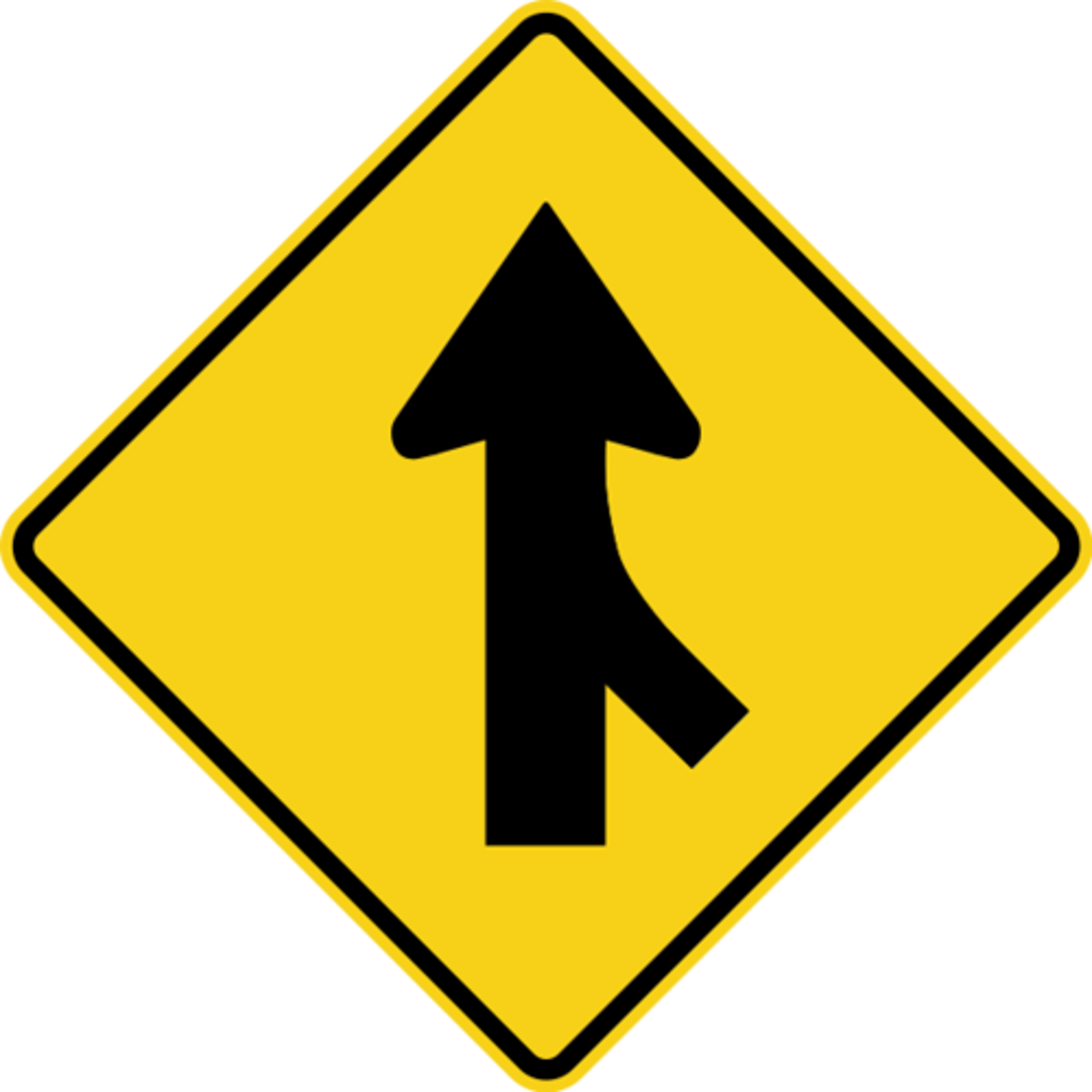
(Unit 2) What type of sign is this?
Rocks falling
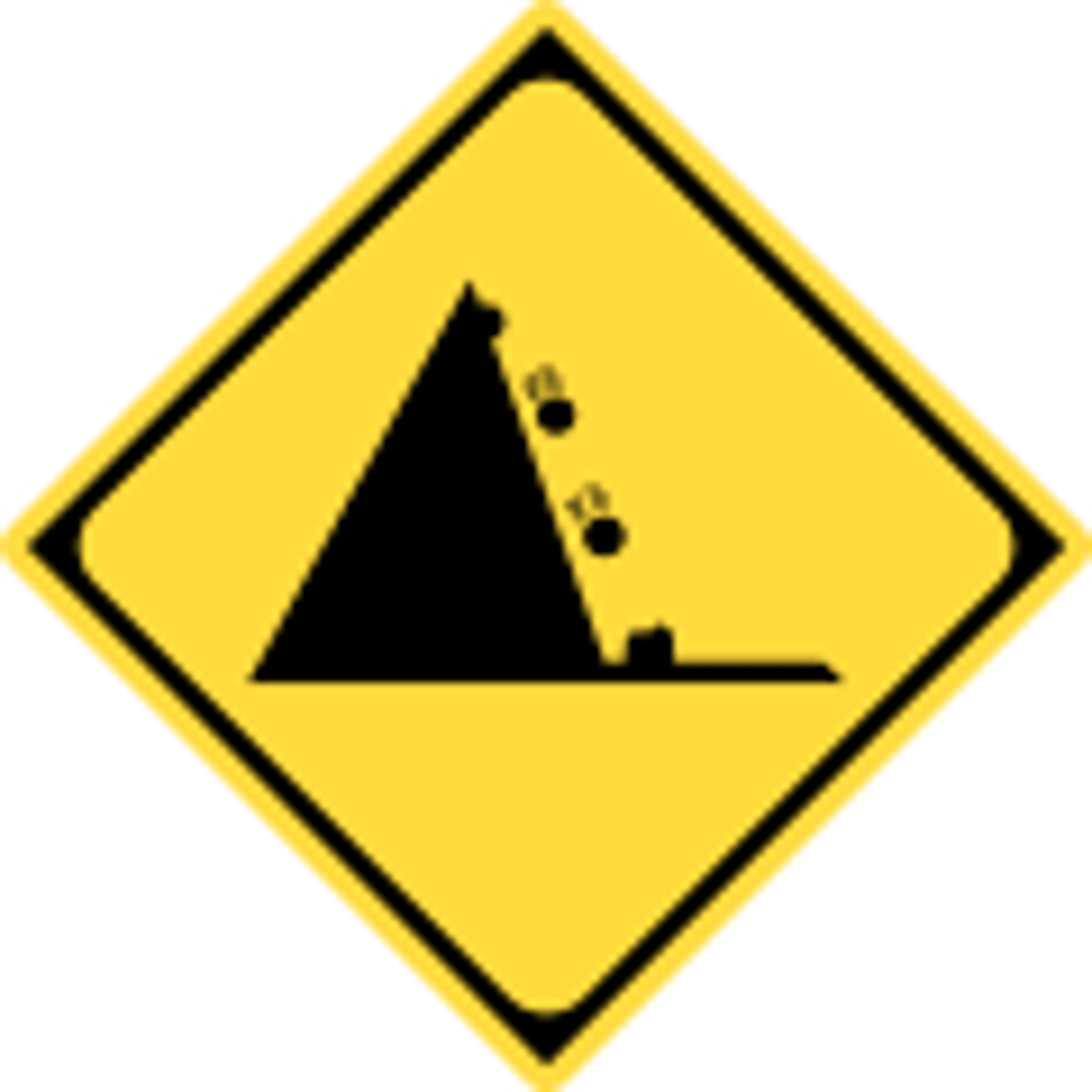
(Unit 3) A red indicator light on a dashboard indicates:
a serious vehicle malfunction that must be addressed immediately.
(Unit 3) Why should a driver conduct a pre-entry check?
Allows driver to check for anyone behind the vehicle, allows driver to check for low or flat tires, and allows driver to check for leaking fluids.
(Unit 3) According to Maryland law, who must wear a seat belt?
All passengers and the driver regardless of age or position in the vehicle.
(Unit 3) A parking brake:
is used to secure a vehicle when parked.
(Unit 3) This symbol when lit indicates:
your gas tank is empty or nearing empty.
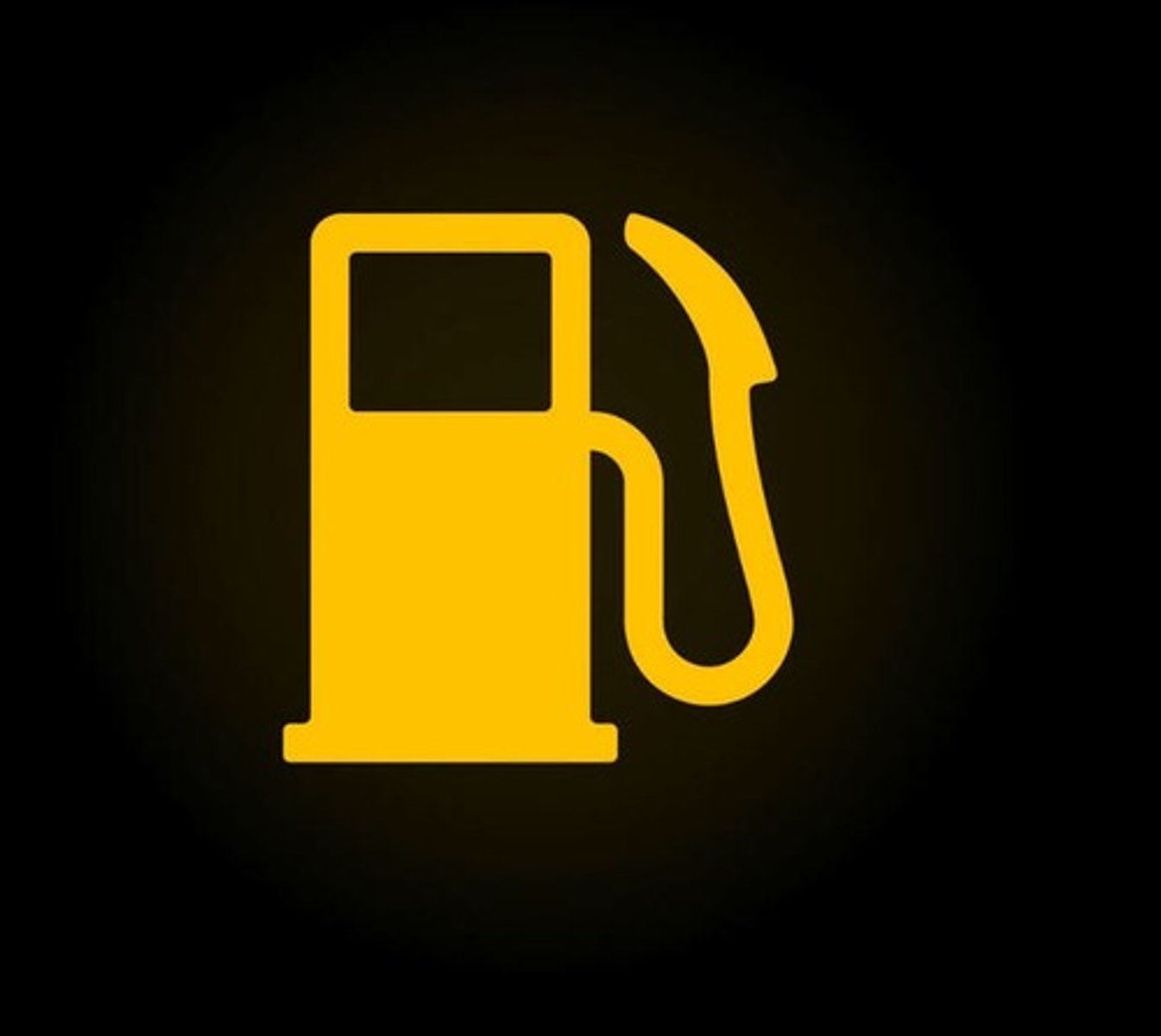
(Unit 3) This symbol when lit indicates:
your oil pressure is bad and you need to stop immediately.
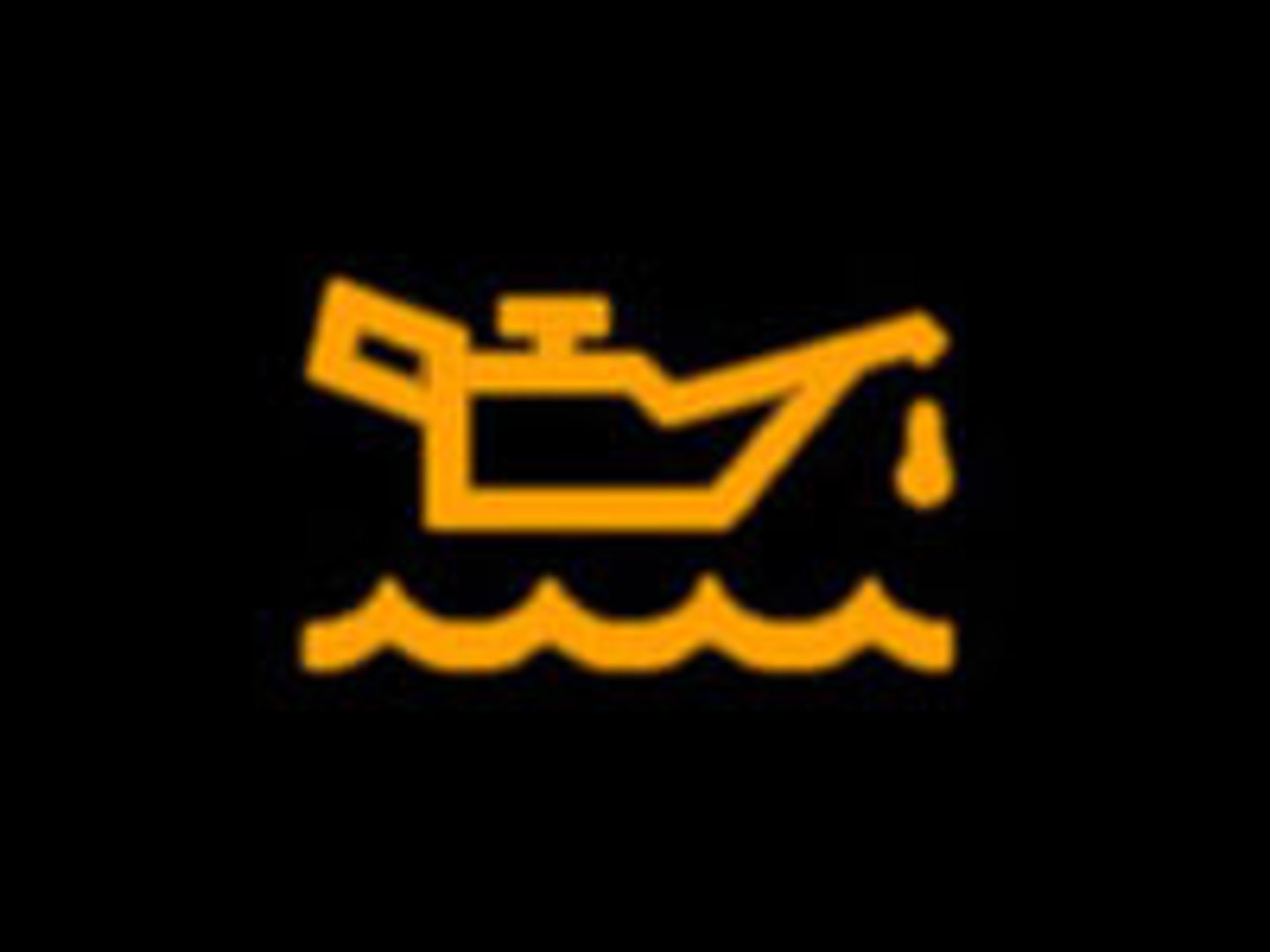
(Unit 3) This symbol when lit indicates:
your electrical system is not working properly.
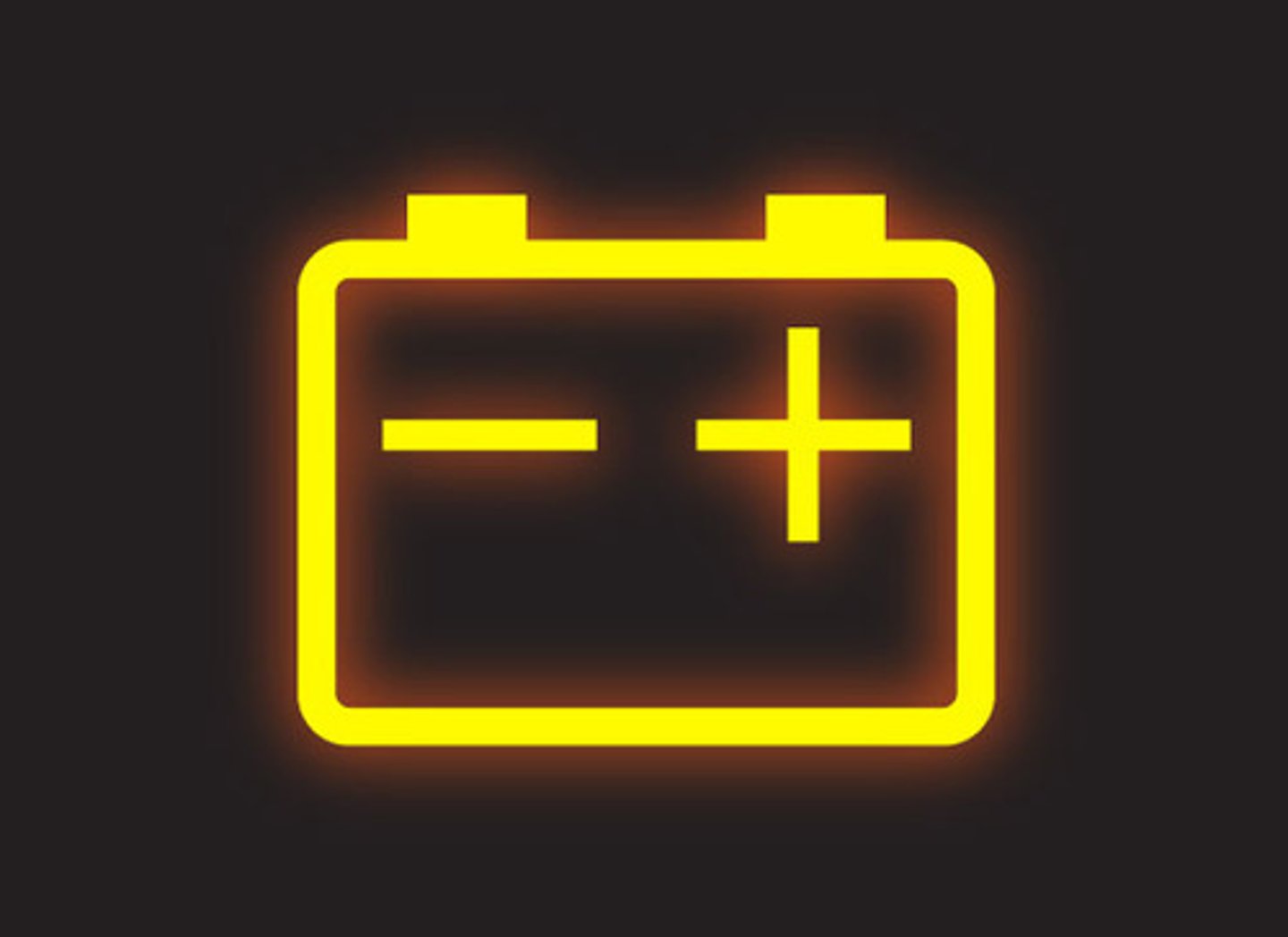
(Unit 3) Coolant leaks can be dangerous because:
Leaking coolant is attractive to and poisonous to animals, a lack of coolant can cause your engine to overheat, and a lack of coolant can cause damage to your radiator.
(Unit 3) Which of the following is NOT and advantage of Enhanced Mirror Settings?
Head checks are no longer necessary.
(Unit 3) Which of the following is true?
Seat belts may cause injury in a crash, but will cause less injuries than if a driver was not belted.
(Unit 4) S.E.E. stands for:
Search Evaluate Execute
(Unit 4) The ACC setting on an ignition switch:
allows a driver to turn on some of a vehicle's features without turning on the vehicle, can drain a battery quickly, and is not necessary to turn on hazard flashers.
(Unit 4) A driver should use S.E.E.
consistently when driving
(Unit 4) How much following distance should you maintain between you and the vehicle in front of you?
at least 3-4 seconds
(Unit 4) When starting a vehicle with automatic transmission, in most cases the gear selector should be in:
P (Park)
(Unit 4) When starting a vehicle, a driver should ahve:
one foot on the brake and the other on the "dead pedals".
(Unit 4) When searching, a driver should look:
at what is immediately in front of his/her vehicle, at what is behind his/her vehicle, and at what is 10-15 seconds ahead of his/her vehicle.
(Unit 4) What is the most important and safest thing a driver should do just before driving away?
Put on the safety belt and put away electronics.
(Unit 4) Idling gas-powered vehicles after starting and before driving away is:
Is not necessary, and is illegal in Maryland if the vehicle is unattended.
(Unit 4) Before driving a vehicle in reverse, a driver should:
Check all mirror, complete headchecks, and use back-up cameras if they are available.
(Unit 5) When do you have to stop for a school bus?
When the red lights are flashing and there is no barrier between your vehicle and the bus.
(Unit 5) How might a driver know if he/she is at risk of hitting a pothole?
There have been a series of significant storms, there is a standing puddle in the road, and all of the vehicles in front of him/her are slowing down.
(Unit 5) According to Maryland law, how far does a driver need to be from a cyclist?
At least 3 feet.
(Unit 5) What is the first thing a driver should do after deciding to make a turn?
Signal at least 100 feet from the turn.
(Unit 5) In a school zone, when must a driver stop?
When directed by a signal or crossing guard.
(Unit 5) When stopping at a stop sign where there is no crosswalk or stop line, a driver should stop his/her vehicle:
Before the front of the vehicle enters the intersection.
(Unit 5) When approaching a roundabout, a driver must:
Yield to traffic coming from the left.
(Unit 5) What should a driver do when he/she gets to a speed bump?
Reduce speed to suggested limit.
(Unit 5) When must a vehicle yield to a pedestrian?
When a pedestrian is in the crosswalk, when a pedestrian is waiting to cross a street, and when a pedestrian is exiting his/her vehicle.
(Unit 5) What makes a left turn across traffic dangerous?
A driver may have limited visibility, a driver has many places to check for other road users, and if struck, a driver is only protected by the door and possibly an airbag.
(Unit 6) What must you do if you see an emergency vehicle on the side of the road ahead, and it is adjacent to the lane you are traveling in?
Change lanes if safe and possible or, if not possible, slow down to a safe and prudent speed.
(Unit 6) Dangerous elements of mixed-use roads are:
parked cars, distracted pedestrians, and drivers searching for their destinations and not paying attention.
(Unit 6) According to the Maryland Driver manual, pedestrians have the right of way:
at street crossings, at any crosswalk, whether marked or unmarked, if a driver is turning on a steady green or when making a right turn on red.
(Unit 6) Distracted pedestrians are:
a problem that is growing more serious annually.
(Unit 6) At 40 MPH, what percentage of pedestrians survive an impact with a vehicle?
10%
(Unit 6) This sign indicates:
you are going the wrong way on a one-way street.
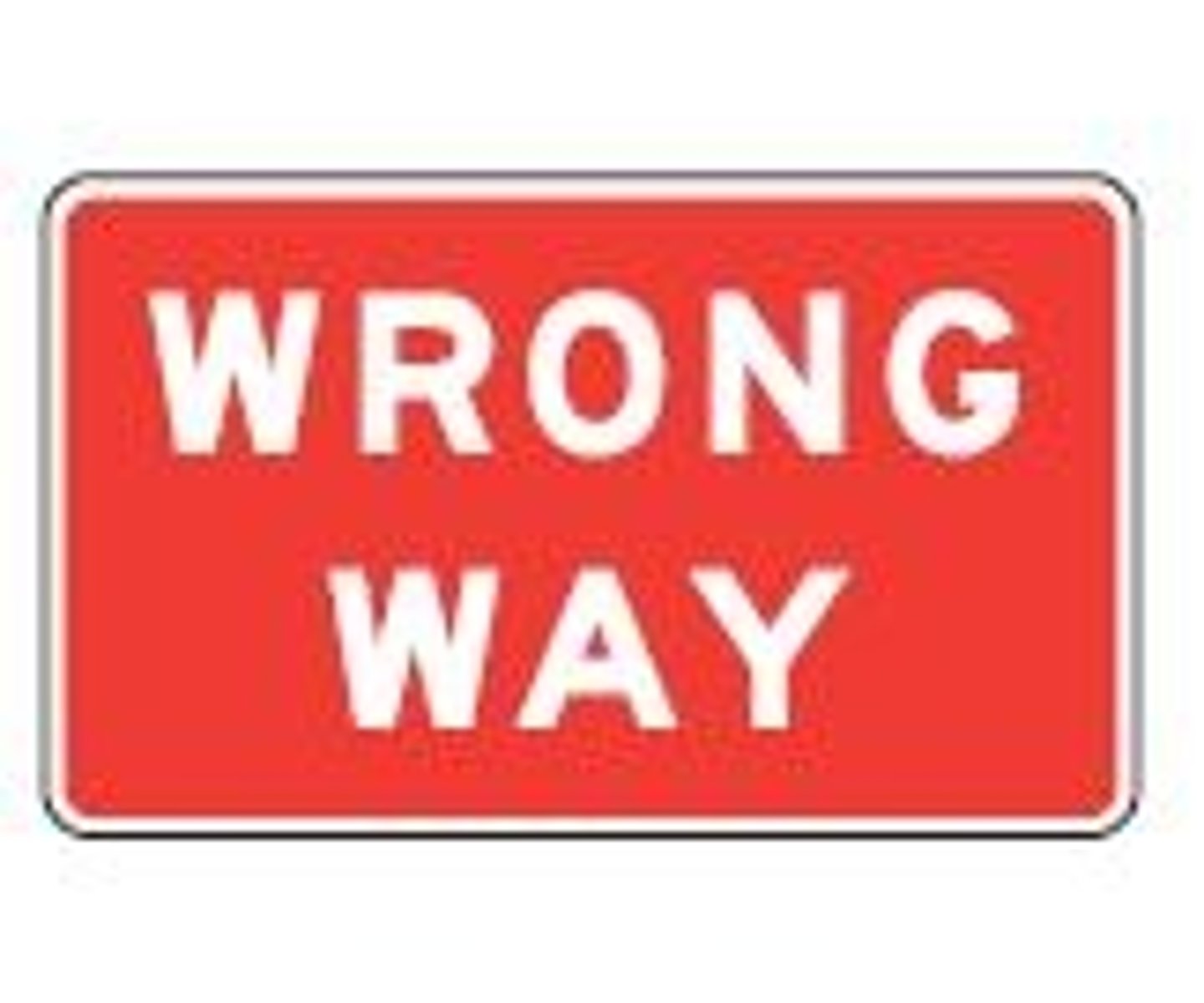
(Unit 6) If a driver needs to turn right at an intersection and the signal is red:
the driver may turn right after coming to a complete stop, searching the intersection, and if a right turn on red is permitted.
(Unit 6) What can a driver do from a shared left turn lane?
Turn off or turn onto a multi-lane road.
(Unit 6) If two vehicles arrive at an intersection with 4-way stop signs, which driver must yield?
The driver on the left if both drivers arrive at the same time.
(Unit 6) A driver may pass another vehicle on a two-lane road if:
there is a single broken yellow line between the two lanes.
(Unit 7) Which of these if used for both entering and exiting a highway?
weave lane
(Unit 7) Which of these is good advice when driving on the same road as a motorcycle?
Do not attempt to share a lane with a motorcycle.
(Unit 7) Which of the following are true about large trucks and buses?
Many people are killed in crashes involving large trucks or buses every year.
(Unit 7) What are "No Zones"?
Areas of limited visibility around large trucks.
(Unit 7) Which of the following is true about driving over bridges?
They can be crowded, the often have limited visibility, and they usually have no shoulder that can be used for emergencies.
(Unit 7) When entering and expressway, in the acceleration lane you should:
search for a gap in traffic and adjust your speed to the speed of the traffic.
(Unit 7) Which of the following is true about speed limits on highways?
Higher speeds contribute to more deaths and more severe injuries.
(Unit 7) Which of these is a safe thing to do when driving through a tunnel?
Turn on your headlights and remove your sunglasses.
(Unit 7) Speed limits through work zones:
are usually reduced for worker safety.
(Unit 7) If an emergency vehicle is approaching from behind you, you should:
move as close ass possible to the edge of the road and allow the emergency vehicle to pass you.
(Unit 8) If your accelerator fails, into which gear should you shift?
Neutral
(Unit 8) If you cause damage to an unattended vehicle, you should:
attempt to locate the driver of the damaged vehicle, leave a note with the name and address of the owner of your vehicle, leave a note with the tag number of your vehicle.
(Unit 8) If your engine fails (completely shuts down) what should you do with your brake?
Do not touch your brake.
(Unit 8) Which of the following should you do if you have a tire blow out?
Grip the steering wheel firmly to maintain control of the car.
(Unit 8) When driving in fog:
use low-beam headlights
(Unit 8) The condition of a vehicle riding on a film of water is known as:
hydroplaning.
(Unit 8) When traveling on snowy or icy roads, which adjustment should a driver make?
Reduce speed to avoid problems with reduced traction.
(Unit 8) If you are convicted of a traffic offense while holding a provisional license:
your 18-month waiting period will begin again.
(Unit 8) If you have unexpectedly driven off the road and want to return to it, you should:
ease off the accelerator and carefully steer back onto the roadway.
(Unit 8) Any time a driver hits anything, person, property or even a pet and fails to stop it is called a:
hit and run
(Unit 9) According to Maryland vehicle law, open containers are:
any alcohol that is not as originally packages.
(Unit 9) As a driver under the age of 21, your maximum legal BAC (zero tolerance) is:
less than .02
(Unit 9) Implied consent means:
You agreed to be tested for the presence of alcohol when driving, you agreed to be tested for the presence of illegal drugs when driving, and more severe penalties for refusing to be tested.
(Unit 9) Which groups can sanction you if you are caught drinking and driving?
The court system and the MVA
(Unit 9) The legal definition of aggressive driving is:
committing three moving violations at the same time
(Unit 9) To avoid driving impaired, a driver should not use
any drug that may limit their abilities
(Unit 9) How long do alcohol-related charges stay on a driving record?
forever
(Unit 9) About how many crashed in the U.S. involve a drowsy driver?
300,000 crashes each year
(Unit 9) According to Maryland vehicle law, for which of these driver is it illegal to text while driving?
learner's permit holders, provisional license holders, full license holders
(Unit 9) If a driver consumes alcohol, he/she should
plan not to drive.